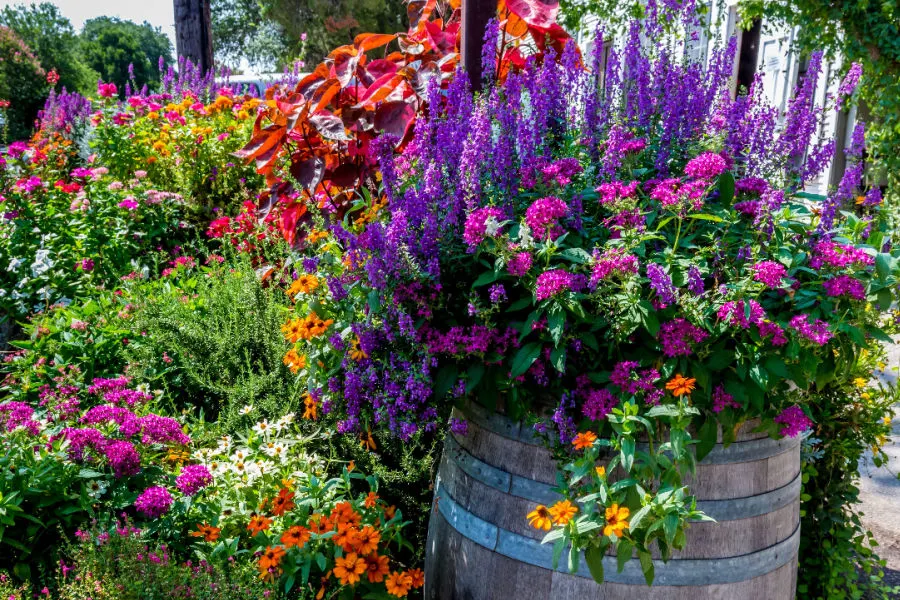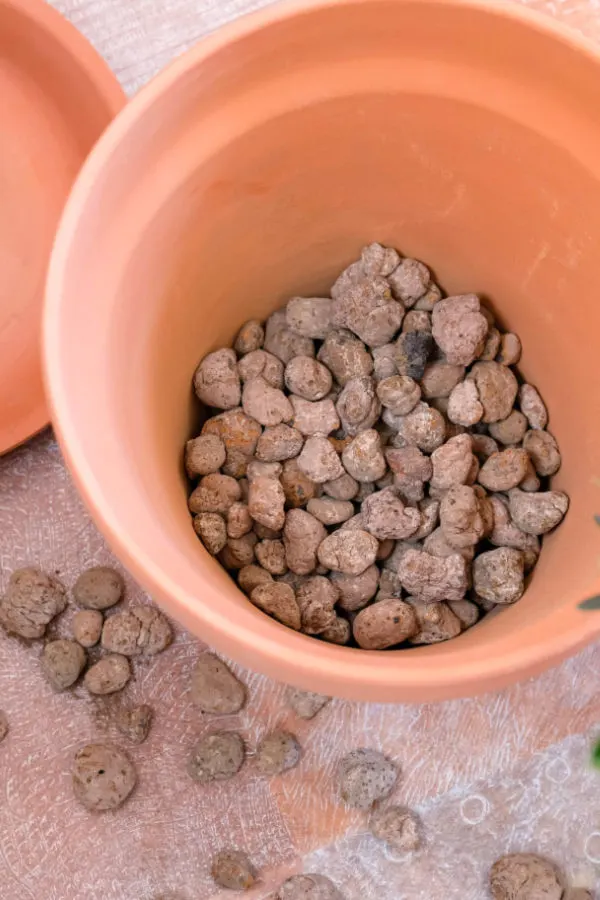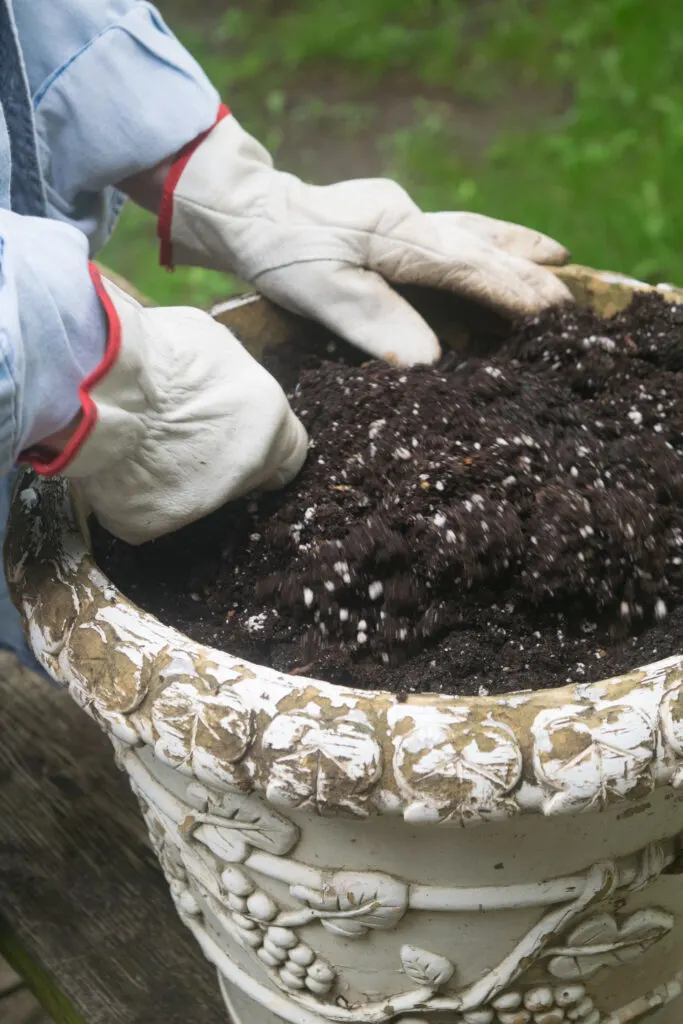When it comes to planting flowers in pots, there are three simple planting secrets that can make a huge difference to help your plants to grow strong and healthy – and have incredible blooms all season long!
There is nothing more beautiful than pots overflowing with colorful flowers in the spring, summer and fall. They are perfect for brightening up patios and porches, or creating big interest almost anywhere in the landscape.
Want to make a big statement at your front entrance? Plant a couple of huge flowering pots! Want to brighten up a sitting area in your garden or lawn? Once again, a few flowering pots will come to the rescue.

But as incredible as they can be in bringing life to your outdoor spaces, they can only do so if they are healthy, vibrant and full of blooms. In fact, if a container plant begins to fail, it can unfortunately have the opposite effect, making a space seem dull and dreary.
For many gardeners, keeping their pots and containers thriving can be a challenge. But it truly doesn’t have to be that way, especially when you start your pots off on the right foot by planting them for success.
With that in mind, here are 3 simple tips and tricks when planting your pots that can set them up for lasting success and big blooms all summer long!
Planting Flowers In Pots – 3 Simple Secrets To Big Blooms!
#1) Creating Proper Drainage
Nothing will wilt and yellow plants like soggy soil. In fact, in many cases, overly wet soil will spell the end of the line for potted plants in quick fashion.
Once roots become waterlogged, they swell up in the soil. When this happens, they become unable to absorb nutrients. Without food, the plants quickly begin to yellow – and along with it, blooms, flowers and even the leaves begin to drop off.

Unfortunately, all too often, when gardeners see their container plants yellowing, they assume they must need water. And with more water, the soil becomes more saturated, and the plant’s health deteriorates even more.
Loose, fertile, and well draining soil certainly plays a major role in keeping soil hydrated properly, but if the water can’t escape the bottom of your pot, no matter how loose the soil is – your roots are going to become waterlogged
This common issue can be easily avoided at planting time with two simple tasks – making sure your pots have enough drain holes, and making sure the bottom layer of material in your pot keeps those drain holes clear.
Creating Additional Drain Holes – Planting Flowers In Pots
First and foremost, you need to make sure your container has multiple drain holes on the bottom. Water can have a hard time draining away into just one hole. Especially if the only exit happens to clog up.
If at all possible, always drill a few extra drain holes in the bottom of your pot. Plastic pots are easy to drill out with a drill bit and a drill. It can be a bit more tricky for clay or concrete style pots, but with the right drill bit for the material, you can safely drill additional holes.

Glass pots are a bit dangerous to drill out without breaking or cracking, so try to find ones with multiple drainage holes already in them. The point is, the more chances your pot has to drain away excess moisture, the better!
Adding Drainage Material To The Bottom Of Your Pot
Beyond the additional holes, the next step before adding soil to your pots is to add additional drain material to the bottom of your container. Whether it is an inch or two of small pebbles, lava rock, or pine bark mulch, adding extra drainage material to the bottom of your pot is a must.
This small layer can keep soil from compacting the drain holes. Excess water from above can drain into this lower level, and then slowly pass out the bottom holes.
Finally, make sure wherever you place your pot that water can escape from the bottom. Even if you have great drainage holes and material in the bottom, if your plant is sitting on a solid surface that won’t let water escape from the bottom, it is still going to become waterlogged.
#2) Use The Right Soil Mix – 3 Simple Secrets For Planting Flowers In Pots
Now that you have great drainage built in, it’s time to fill your flowering pots with light, powerful soil! One of the biggest secrets of all to growing great flowers in containers is making sure to use a light, fertile and well-draining potting mix to plant in.
Heavy soils hold moisture in and can quickly suffocate plants. For starters, never use ordinary dirt or garden soil for growing flowers in pots. It’s too heavy and simply doesn’t have the nutrients your flowers will need.

Instead, select a good quality potting soil that is light and full of nutrients. You can even add more power to commercial mixes by amending them with compost, worm castings and perlite. The perlite will help lighten the soil even more, while the compost and worm castings will fill it full of energy.
Annual flowers and even perennial flowers need large amounts of nutrients to power growth and big blooms – especially in pots! By building that power into the soil at planting time, you can be sure that your plants will have the food they need to thrive
You can also make your own amazing potting soil with a mix of compost, top soil, worm castings, perlite and spent coffee grounds. But whatever you do, give your plants great soil from the start! See our article: How To Create The Best Potting Soil For Your Potted Plants – The Perfect Potting Soil Recipe!
#3) Bigger Containers Last Longer – 3 Simple Secrets For Planting Flowers In Pots
Last but not least, if you want all season flower power, you need to select larger containers and pots. Smaller pots simply do not have enough soil to grow extensive roots. And without a robust root system, there won’t be big blooms in your pots very long!

Too often, gardeners plant annuals and perennials in pots that just do not allow for enough root growth. Smaller pots also dry out quickly and can overheat a plant’s roots when the sun gets hot. Small containers also need to be watered much more often as well, causing more work.
Plain and simple, the more soil and roots your plants have the better they will grow. It gives them more ability to soak up vital water and nutrients. And it’s important to remember that the depth of your container is just as important as the volume.
Look for containers that are deep enough (at least ten to twelve inches) to allow roots to grow far down. Shallow containers once again dry out quick and overheat soil. Here is to getting your flower pots off to a great start this year on planting day. And even better, to having them full of blooms all spring, summer and fall long!
Follow Our Facebook Page For Great Gardening Tips And Advice! This Is My Garden Facebook Page
This Is My Garden is a garden website created by gardeners, for gardeners. Jim and Mary Competti have been writing gardening, DIY and recipe articles and books and speaking for over 15 years from their 46 acre Ohio farm. They publish three articles every week, 52 weeks a year. Sign up today to follow via email, or follow along!

